With all the hype about the Instant Pot on Amazon (32,756 reviews with an average of 4.5 stars) and social media of late, I figured it was time to investigate why people love it so much.
I also wanted to compare the Instant Pot vs. stovetop pressure cookers to understand the differences between the new electric cookers and the traditional stovetop cookers.
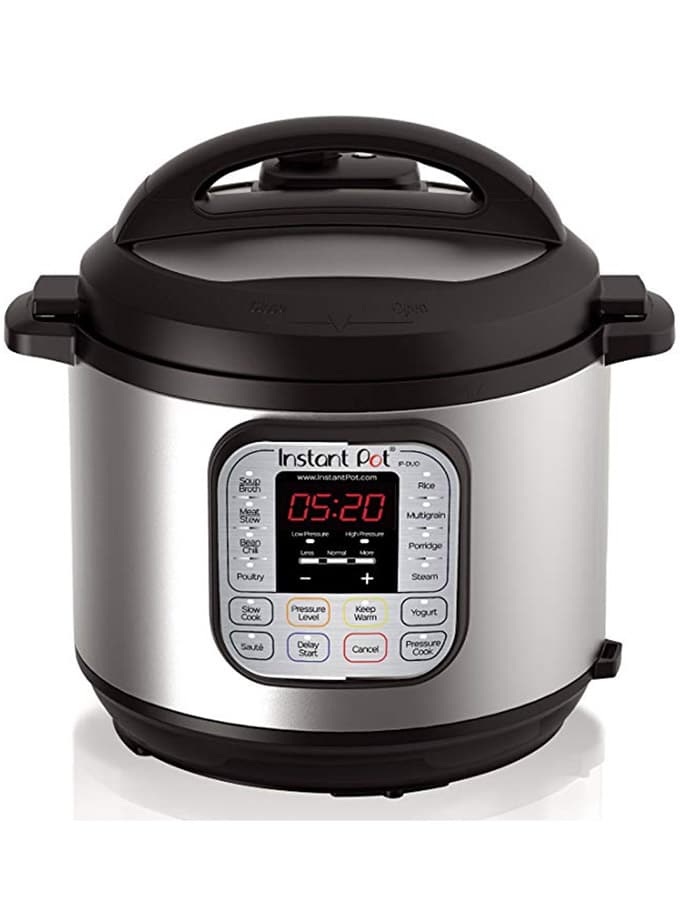
Based on reviews, it is evident that most people buying the Instant Pot are buying a pressure cooker for the first time.
These folks are encouraged by the Instant Pot’s ease of use (plug it in and hit a preset button), its similarity to the slow cooker, and its multiple safety features.
They may even appreciate that it sits on the counter, and not on the stove.
You may have already understood, the Instant Pot is a machine designed for convenience, and it is perfect for cooks who are still building their confidence in the kitchen.
This can be really good. Or it can be a double-edged sword if you really love to cook, since with convenience you often have to give up something else.
I come from the other direction with pressure cookers. I am very familiar with stovetop pressure cookers, the very type that a lot of people irrationally fear.
The ones I use are entry level budget-friendly pressure cookers made by brands such as Presto (American), Prestige, Vinod, and Hawkins.
And they are known as the jiggle top variety of pressure cookers.
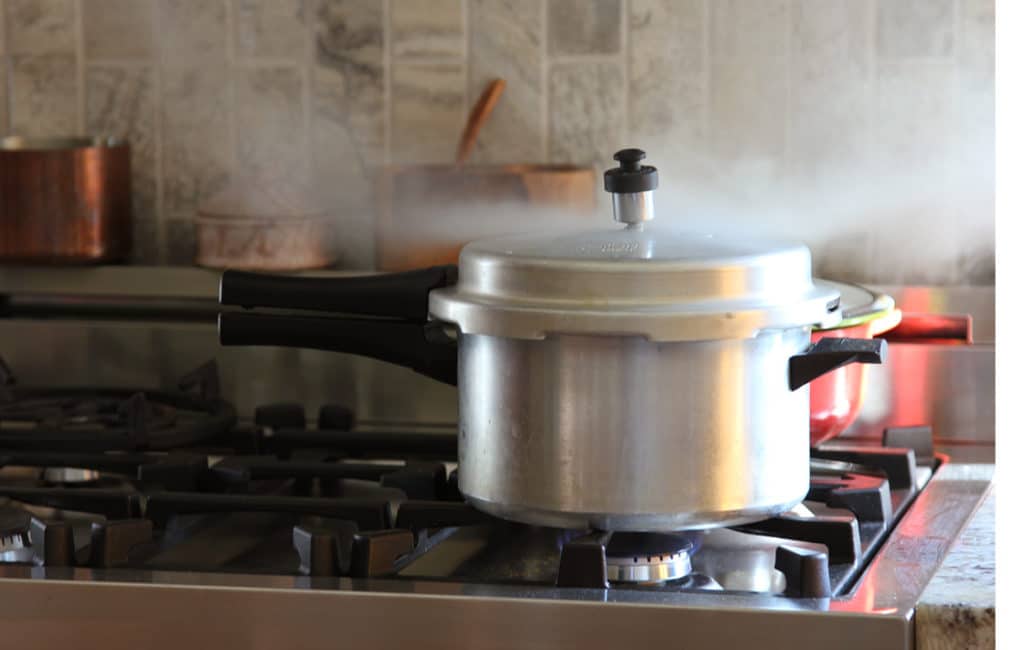
These guys hiss and whistle as you cook with them, which can be a comfort or an annoyance, depending on your outlook.
Their biggest advantage, aside from their reasonable prices, is that they are uncomplicated.
And yes, they are still very safe to use. All pressure cookers are safe to use.
Still not sure? Read on for a detailed comparison of the Instant Pot vs. stovetop pressure cookers.
The Facts: Instant Pot Vs. Stovetop Pressure Cookers
Below are the facts about the Instant Pot vs. stovetop pressure cookers.
I include the pros and cons of each so you can decide what pressure cooker is best for you.
If you are looking to buy a stovetop cooker, check out my extensive review post of the most popular brands, since this post only includes specific recommendations for the Instant Pot.
I hope that you find this post helpful, and that it encourages you to take the leap into pressure cooking your food.
Let’s face these guys off against each other: Instant Pot can be compared with stovetop pressure cookers in four main ways:
- Ease of use
- Cooking time and temperature
- Number of functions
- Safety features
1. Ease Of Use: Set And Forget Versus The Watched Pot
The Instant Pot is an electric pressure cooker. The greatest advantage of this type of cooker is that you can set it and forget it while you do something else.
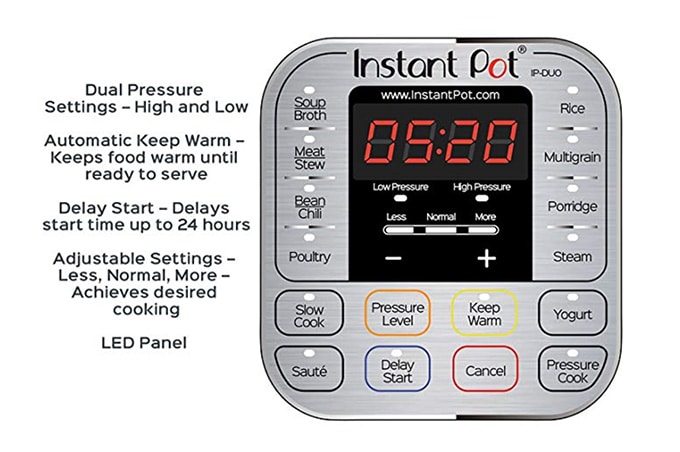
This is not the case with a stovetop cooker, where you must watch until it reaches high pressure, at which point you must adjust the temperature down for a set number of minutes.
The way I handle this is to always use a timer with my stovetop pressure cookers, and I always use my cooker while I am in, or near the kitchen, preparing the rest of the meal.
I do not find this to be a problem at all, as I will always want to have other dishes as part of the meal. So the time in the kitchen is well spent.
To give an idea of the timing to those who are new to pressure cooking, it takes about 10 minutes for the average stovetop cooker to come up to high pressure.
Then your cooking time under pressure is generally between 5-20 minutes.
So the total time you must spend in the kitchen with your pressure cooker is around 30 minutes or less.
2. Cooking Time And Temperature Comparison
Stovetop cookers generally cook at higher pressure because they are powered by your stove. The standard in the United States is 15 psi.
This means that food cooks faster, and with greater vigor, in a stovetop cooker.
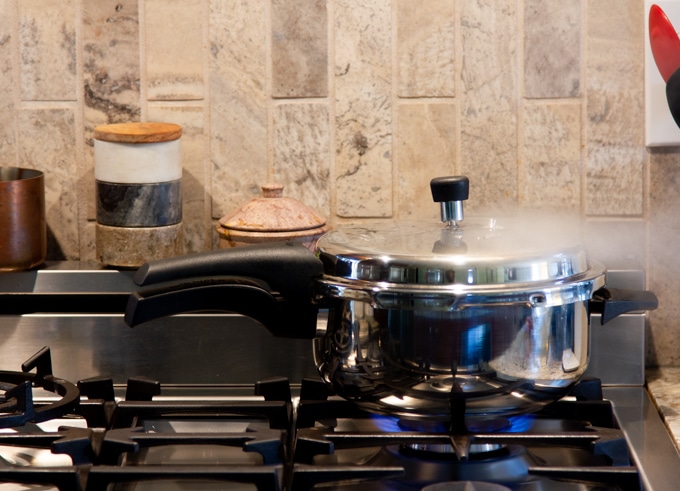
When using an electric pressure cooker like the Instant Pot, you will want to add about 25 percent to the cooking time to get similar results.
In some cases, the results from the Instant Pot will never be as good.
See this video for a useful side-by-side comparison.
For example, your beans or meat may not get as soft as they would in a stovetop cooker.
The reason for this is simply that the electric cooker cooks at 10 to 12 psi, and doesn’t reach the highest pressure of 15 psi.
In a sense, an Instant Pot bears some similarity to its close cousin, the slow cooker.
3. Number Of Functions: Instant Pot vs. stovetop pressure cookers
By definition, the Instant Pot is a multifunctional cooker.
The most popular model is the Instant Pot DUO 6 quart 7-in-1 cooker. It’s a pressure cooker, slow cooker, rice cooker, steamer, sauté, yogurt maker, and warmer.
The Instant Pot can also be purchased as a 9-in-1, which adds egg cooking and sterilizing to the functions.
I have read good things about the egg function. Apparently the method pressurizes and expands the little space inside the top of the egg, making the eggs easier to peel.
Risotto in the Instant Pot also sounds like a winner, and slow cooked meat (for you meat-eaters) is always a bonus in a cooker like this.
However, as for the rice cooking function, it sounds like a resounding no. Too chewy.
The sauté function works if you are okay with low heat.
One surprising trick that can be done with an Instant Pot is sous vide cooking using a water bath with the keep warm setting.
There are a bunch of accessories you can buy to make some of these functions easier to take advantage of.
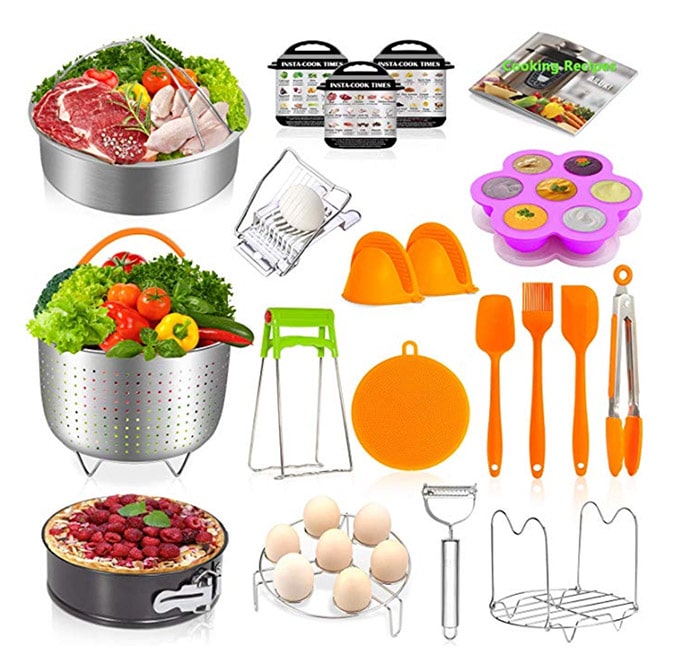
There are also a plethora of cookbooks specializing only in Instant Pot cookery.
Most folks, to my understanding, use the multifunction Instant Pot mainly as a pressure cooker. How many people make homemade yogurt anyway?
In comparison, a stovetop pressure cooker has just three functions, but each is very powerful.
It is a very useful steamer when you use it with the lid on and without the pressure regulator.
In fact I believe it is the best kind of steamer, because the sealed lid and a narrow escape route for the steam both serve to pressurize the interior of the pot ever so slightly.
You can’t compare this kind of secure environment for steaming your vegetables with a standard saucepan with a lightweight lid.
Any stovetop cooker will also be much more effective on sauté mode than the Instant Pot, because it is powered by the heat of the stove.
The stovetop cooker is also a more powerful cooker than the Instant Pot, as I already mentioned. It will cook food faster and more thoroughly.
4. Safety Features
The truth here is that all pressure cookers today are safe. There is little-to-no chance a cooker will ever explode, whether it is a stovetop cooker or an electric pressure cooker.
You do have to be more aware when using a stovetop cooker though, for the simple reason that it is powered by the stove, and you must turn that power off.
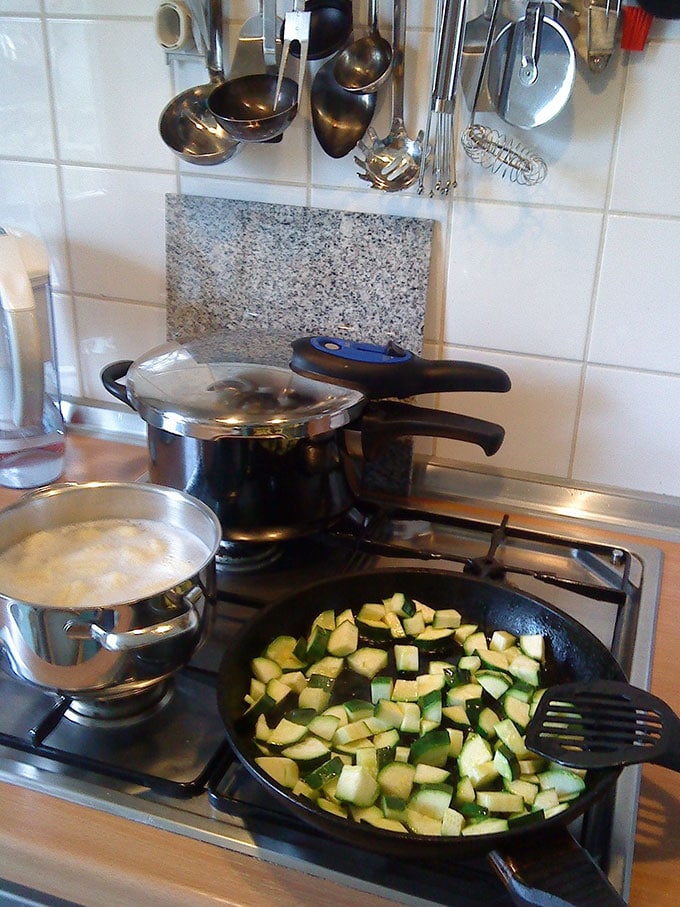
However, it is no different from cooking something in a saucepan or skillet. If you don’t turn off the burner, your food will burn, and smoke and fire will follow.
When using a pressure cooker, what could happen if it runs out of water is that the temperature inside the pot will rise, and the bottom of the pot will start to scorch and burn.
At this point, your safety valve will melt and pop open to release the pressure. This safety valve is a feature that the old cookers lacked, and it is what led to the problem of explosions.
Older pressure cookers used to be designed with clamps on their lids as well, whereas today, all lids are manufactured so as to be either interlocking, or designed as an inside lid that cannot not come off under any circumstances, just like a door in a jetliner.
Some people do feel an electric cooker like the Instant Pot is safer, because it has built-in sensors that will automatically shut off the cooker if the internal temperature rises.
Recommended: Pressure Cooking Guide: How to Use A Pressure Cooker Safely —READ MORE
Electric cookers also require that you set a cooking time that automatically shuts off when it's done. So it is the set-and-forget situation.
Should I Buy An Instant Pot, Or Not?
Hopefully the information I provided in this article about stovetop versus electric pressure cookers helps you to make your decision about whether to buy an Instant Pot, or not.
There are definite pros to the Instant Pot if you are a person who values healthy, home-cooked food, but doesn't have a lot of time to spend in the kitchen.
The ability to throw things into the Instant Pot, set it to cook, and walk away to do something else can be very helpful. Or if you have children and you are liable to get distracted, then I think the Instant Pot will really be helpful to you.
Just make sure you have space on your counter top or cupboard for this monster sized appliance. Make friends with it and enjoy some awesome dinners.
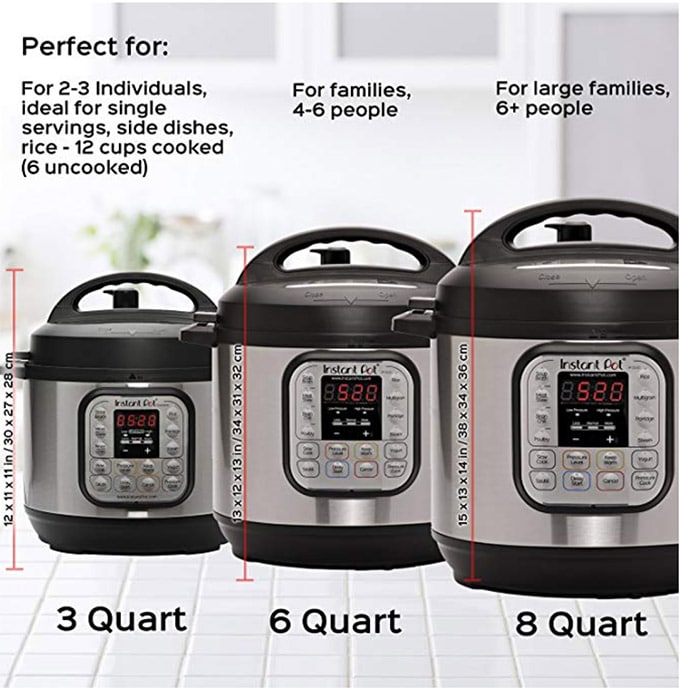
However, if you are someone who has the time to cook, and you enjoy cooking, I would recommend that you go with one of the many wonderful stovetop pressure cookers that I highlight in this post.
Stovetop pressure cookers come in a variety of shapes, sizes, and colors, many of which are aesthetically beautiful. They are superior for sautéing and steaming, and they are speedier to operate overall.
For the price, you can likely afford to buy multiple. Heck, you might even find yourself cooking with more than one in a single meal like I do.
That's a wrap on this post dear readers, but don't leave yet, because I've got a lot more on pressure cookers for you to explore.
Recommended Articles
Pressure Cooking Guide: How To Use A Pressure Cooker Safely
Best Stovetop Pressure Cookers: Presto, Prestige, Hawkins, Fissler
How To Cook Dry Chickpeas From Scratch
If you liked this post, please share it with your friends, or leave a comment below.
For more Buttered Veg lifestyle content, follow me on Pinterest, Facebook, Instagram, and Twitter.
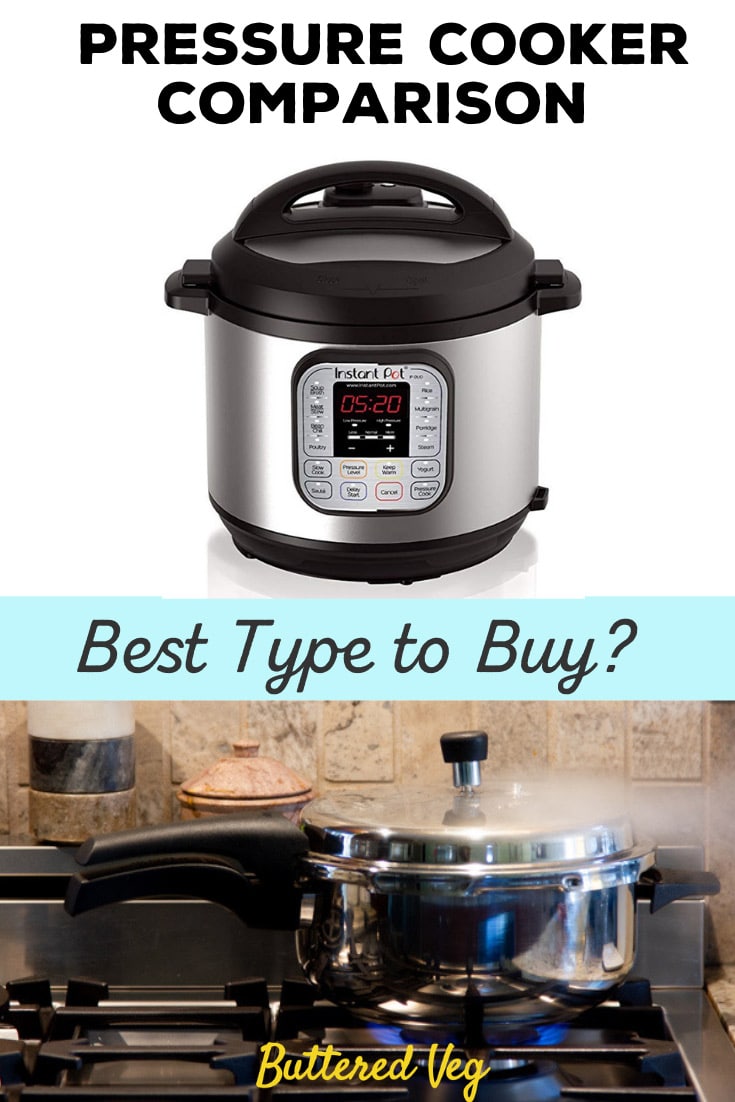



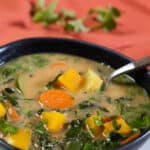
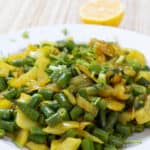




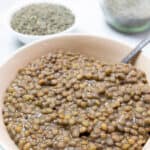
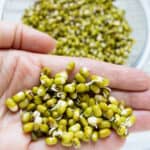
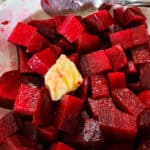


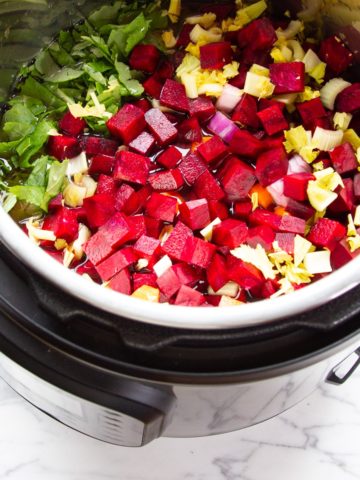
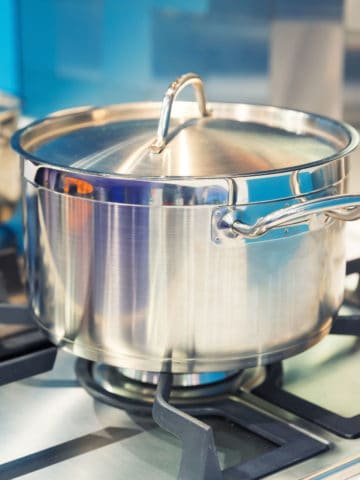

Judy Vallas
Really well written and thorough, and I was happy to read I’m justified in preferring my stovetop version! Not because you skewed it in any way, but because it suits the things I personally prefer in my cooking life.
Andrea
Thanks Judy!! It might have been skewed that way - LOL. It's what you get used to. I have gotten more used to the Instant Pot and now happily use both!!
—Andrea
Ikenna
Indeed an insightful reviews. Thanks it's very helpful to settle the conflict of choice between the old and the new on the subject of pressure cooker
Andrea
Hi Ikenna,
Thanks so much! Which one did you decide to buy?
Shil
Very useful article for Indians who already own and regularly use a pressure cooker for most cooking. Thankyou!
Andrea
Thank you! I appreciate the comment.
Patti M
Very helpful article!
Andrea
Hi Patty, Thanks I appreciate your feedback 🙂